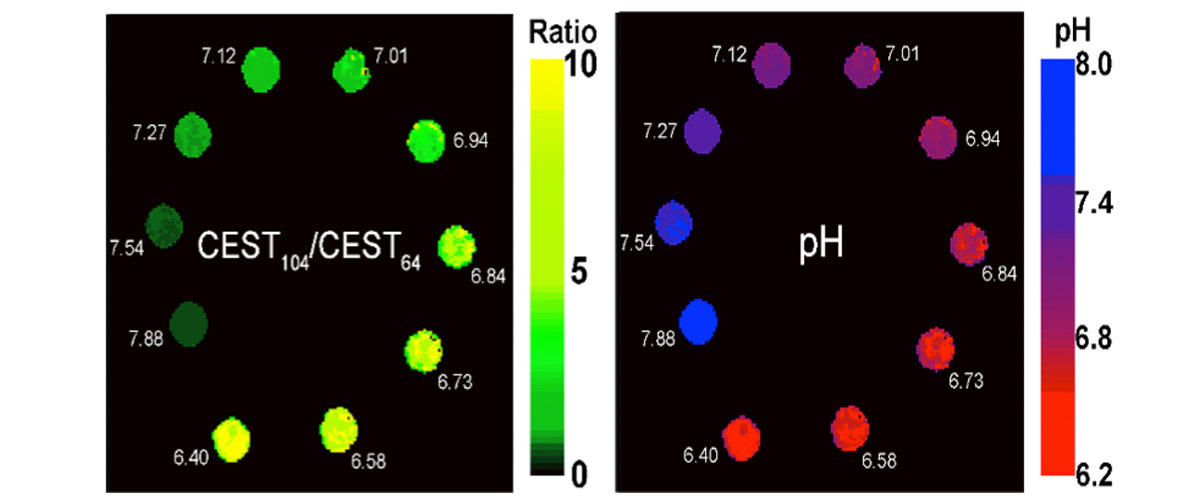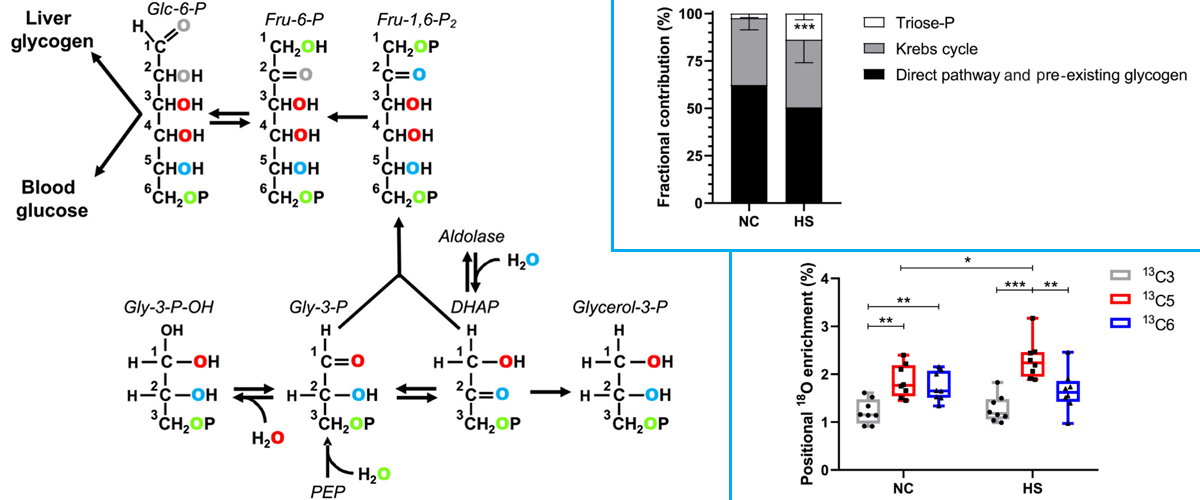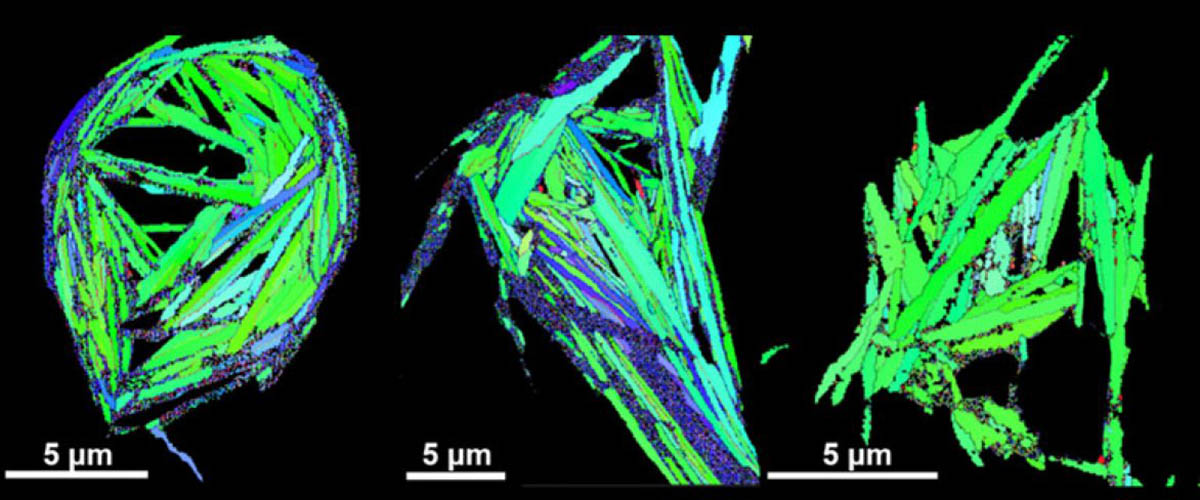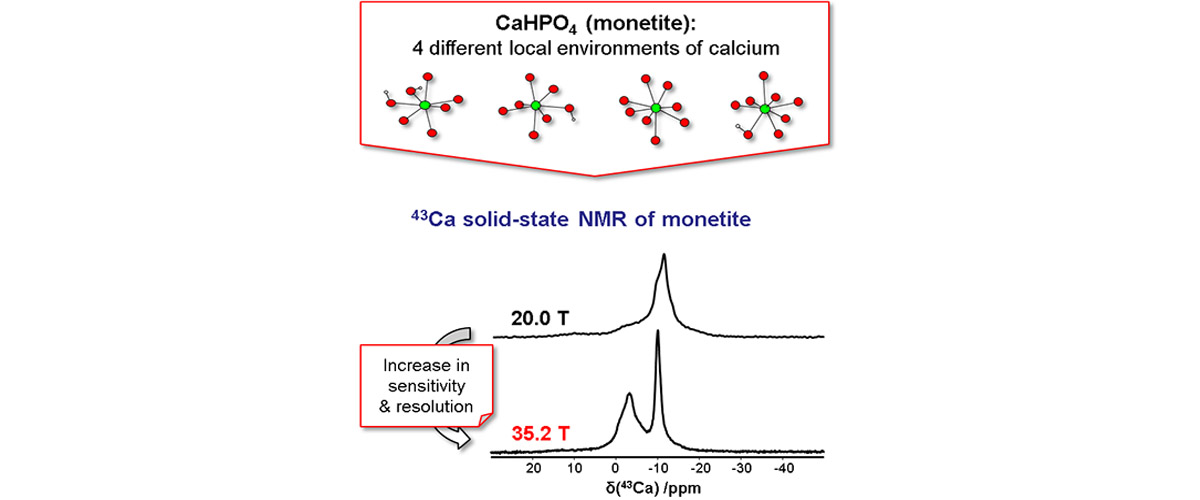What did the scientists discover?
MagLab users demonstrated the use of molecular cobalt complexes as ratiometric magnetic resonance imaging (MRI) pH sensors. These complexes feature two responsive functional groups that influence the surrounding bulk water molecules with opposing pH dependence. This provides a highly pH-sensitive ratiometric response that can be used to generate a pH map.
Why is this important?
Reduced tissue pH is closely associated with a number of pathological conditions, including tissue inflammation, cancer, and ischemia (inadequate blood supply to an organ). As such, the ability to accurately map tissue pH in a noninvasive manner would be of great importance for the early detection and treatment of many diseases. This approach exhibits the potential for visualizing pH changes with unprecedented sensitivity using MRI.
Who did the research?
Agnes E. Thorarinsdottir1, Kang Du1, James H. P. Collins2, T. David Harris1
1Northwestern University; 2National MagLab
Why did they need the MagLab?
The high probe sensitivities of the unique instruments at the MagLab’s AMRIS Facility, in conjunction with the strong MRI technique experience of the AMRIS staff, enabled the acquisition of high-resolution phantom images of our pH-sensing compound even at low concentrations.
Details for scientists
- View or download the expert-level Science Highlight, Imaging pH levels with a CoII2 MRI Probe
- Read the full-length publication, Ratiometric pH Imaging with a CoII2 MRI Probe via CEST Effects of Opposing pH Dependences., in J. Am. Chem. Soc. .
Funding
This research was funded by the following grants: G.S. Boebinger (NSF DMR-1157490, NSF DMR-1644779); T.D. Harris (FA8650-15-5518, NSF NNCI-154220)
For more information, contact Joanna Long.






